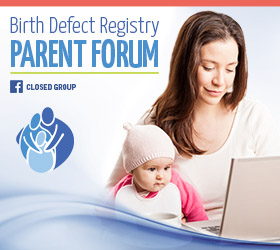What Is Autism?
What Are Autistic Spectrum Disorders (ASDs)?
ASDs are serious disorders of behavior and communication. In the mildest forms, ASDs may resemble learning disabilities. The more severe forms of autism involve self-injury and the need for constant care. Symptoms of autism are most often noticed in the first three years of life. Babies who resist cuddling and don’t respond to their environment may be showing early signs of autism. According to the Centers for Disease Control, one in 36 children has been diagnosed with an Autistic Spectrum Disorder.
What Are Autism Spectrum Disorders (ASDs)?
Autism spectrum disorders range in severity and the need for intervention and support.
ASD Level 1: Requiring Support Level 1 autism is the mildest form of autism, sometimes referred to as “high-functioning.” Individuals with ASD Level 1 may have difficulty understanding social cues and struggle to form and maintain personal relationships. Children at this level can speak in complete sentences but may find it challenging to engage in back-and-forth conversations. They may also experience inflexible behavior, such as difficulty switching between tasks, staying organized, and planning.
ASD Level 2: Requiring Substantial Support Children with ASD Level 2 show more noticeable challenges in social communication and repetitive behaviors compared to those with Level 1 autism. They have difficulties with both verbal and nonverbal communication and may have unusual responses to social cues. Inflexible behavior is more pronounced, and repetitive behaviors occur more frequently. Children with Level 2 autism often struggle with changes in routine, which can lead to challenging behaviors at home and school.
ASD Level 3: Requiring Very Substantial Support ASD Level 3 is marked by severe difficulties in social communication and extremely inflexible behavior. Children at this level are typically nonverbal or use only a few words of intelligible speech. They have limited social interactions and may respond to others only to meet immediate needs. Individuals with Level 3 autism exhibit significant inflexibility, with extreme difficulty coping with changes in routine. Restrictive or repetitive behaviors interfere with their ability to function, and changing focus from one activity to another can cause considerable distress.
How Do You Know If Your Child Should Be Evaluated For An ASD?
Early Indicators That a Child May Have an ASD*
- Does not babble, point or make meaningful gestures by one year of age
- Does not speak one word by 16 months
- Does not combine two words by age two
- Does not respond to their name
- Loses language or social skills that they had previously
Other Indicators*
- Doesn’t make eye contact or enjoy physical cuddling
- Doesn’t seem to know how to play with toys
- Obsessively lines up objects
- Becomes overly attached to one toy or object
- Doesn’t smile
- Needs a rigid, highly structured routine
- Makes repetitive movements such as head banging, spinning, and rocking that may be continued even when these activities cause self-injury to the child
- Abnormal responses to sensations, light, sound, touch
- Children with autism may act as if they are deaf
- Speech problems including immature speech patterns and using words without understanding their meanings
- Very high or low activity levels
- Insensitivity to pain
- Impulsive behavior with no real fear of dangers
- Frequent crying and tantrums for no reason
*Some of these symptoms may occur in children with other disabilities.
How Are ASDs Diagnosed?
Since there are no medical tests that can diagnose ASDs, children must be observed to see if their behavior patterns are consistent with autism. Symptoms can change as the child grows older; so, it is important for parents to provide as complete a medical history as possible.
How Can You Help A Child With Autism?
Multidisciplinary Team: A child with autism needs the coordinated services of a team of specialists including a special education teacher, language pathologist, clinical psychologist, and child development specialist. Parents are also an essential part of this treatment team.
Medication: Diet and medication can sometimes help in cases of autism involving metabolic abnormalities. Improvements have been noted in some children with autism when they are put on dairy and gluten free diets.
Treatment Strategies: There are six goals of treatment for children with autism.
- Stopping the bizarre and inappropriate behavior that prevents the autistic child from relating and communicating with others.
- Increasing the attention span and perceptual skills needed to work on educational skills.
- Helping the child with self-care skills.
- Providing opportunities for the child to socialize with others.
- Stimulating the quantity and quality of language to increase communication skills.
- Training parents to help provide educational and relationship experiences.
Education: A child with an ASD will benefit from a highly structured, individualized educational program. Speech therapy can help develop language skills. Special efforts should be made to help the child learn to relate as normally as possible to family and peers.
Counseling: Meeting the challenges of raising an autistic child can be difficult for any family. Counseling services can serve as a relief valve to release some of the pressure that can build up in a family that is coping with a complex disability like autism.
What Is In The Future For Children With Autism?
The National Institute of Neurological/Communicative Disorders and Stroke is sponsoring studies to determine the best methods for training children with ASDs in language and communication skills.
Can Autism Be Prevented?
Since some cases of autism have been associated with chemical exposure during pregnancy, it is important to avoid all unnecessary exposure to drugs, chemicals and other potentially toxic environmental substances during pregnancy. Early diagnosis and treatment of PKU and celiac disease will also reduce the risk of a child having autism. Because of the rising incidence of ASDs, many new research projects have been funded to study the causes, early diagnosis and treatment of ASDs.
Fact Sheet by:
Birth Defect Research Children, Inc.
www.birthdefects.org







